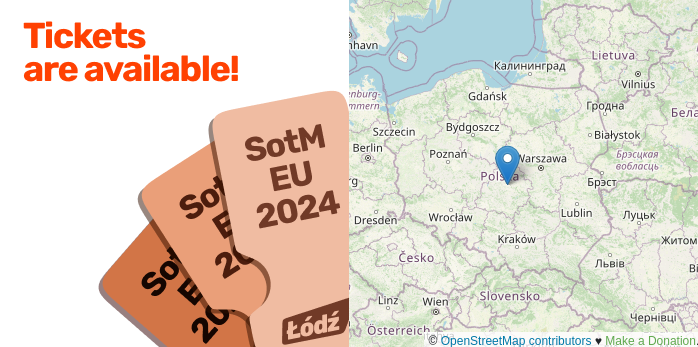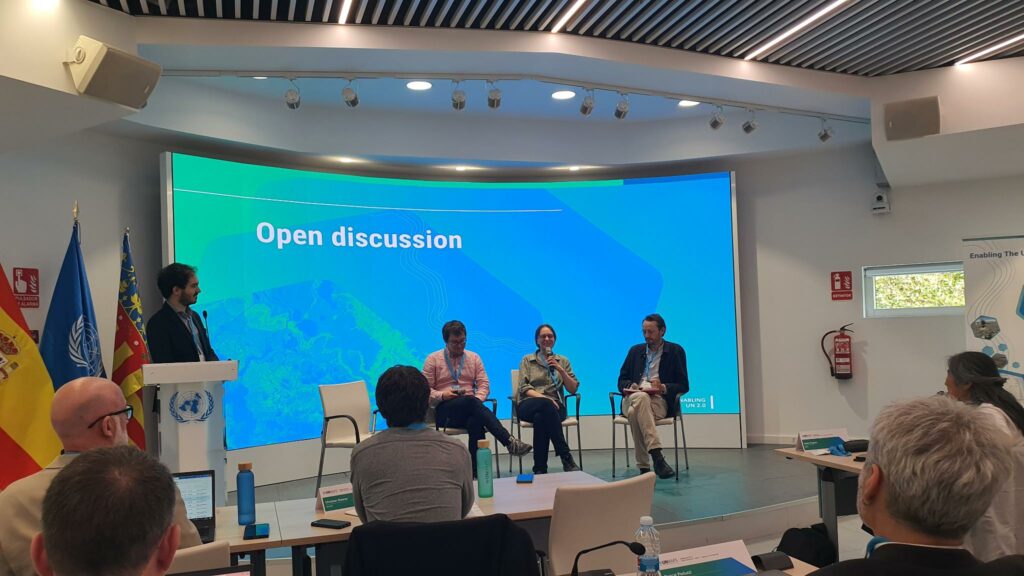
OpenStreetMap Foundation members will vote to elect a new board in October. There will be four seats available: of Arnalie Vicario, Craig Allan, Mateusz Konieczny and Sarah Hoffmann, whose board terms are ending. The terms of Dani Waltersdorfer, Guillaume Rischard and Roland Olbricht will continue. There are seven seats on the foundation board and board members are volunteers.
Self-nominations of board candidates will open on 28 July 2024 and you will be able to nominate yourself on this OpenStreetMap wiki page: https://wiki.osm.org/wiki/Foundation/AGM2024/Election_to_Board#List_of_board_candidates
You can create an account on the OSM wiki here and you will be able to add your name to the table that will be added on that date by editing the page here (please wait until 28 July 2024 to do so). Self-nominations will close on the 13th of August at 23:59 UTC.
Election timeline
The timeline of the election is here: https://wiki.osm.org/wiki/Foundation/AGM2024/Election_to_Board#Key_dates
What the board is/is not, rules and responsibilities and why run
Please read the links on the OSM wiki.
A lot of the foundation’s work is done by the volunteers of our Working Groups, and if you want to help the foundation, you can also look at joining those.
Who can become a board candidate
Any natural person may be elected to become a board member, provided that:
- they have been a normal OSM Foundation member [1] or an associate member [2] during the full 180 days before the General Meeting, which will take place on 19 October 2024, and
- have been a normal member for the full 28 days prior to the General Meeting, and
- are willing to act as a board member, and
- are permitted by law to do so.
[1] Normal members provide their full residential address and can vote on all issues. Their residential address may be disclosed to other members. [2] Associate members provide just their country of residence - which may also be disclosed to other members - and can vote - but not on all issues. Additionally, they cannot be board candidates.
If you want to find out the type of your OpenStreetMap Foundation membership (normal or associate), please check the most recent approval/renewal membership email or email the volunteers of the Membership Working Group at membership@osmfoundation.org from the email account associated with your OSM Foundation membership. Please see the OSM wiki regarding changing your membership type.
Resources about the 2024 board election and Annual General Meeting
The main two pages that have the information about the 2024 board election and Annual General Meeting are:
- OSM wiki: https://wiki.openstreetmap.org/wiki/Foundation/AGM2024/Election_to_Board and
- OSM Foundation website: https://osmfoundation.org/wiki/Annual_General_Meetings/2024
Resolutions proposed by OSM Foundation members
OSM Foundation members can submit resolutions and ask the membership to vote on them. The resolutions need to be supported by at least 5% of members eligible to vote, in order to be added to the ballots. Please read: Companies Act 2006: Members’ power to require circulation of written resolution. The deadline for providing the supported resolutions will be the 24th of August.
How you can help
A few of the current and past board members have mentioned that the thought of being a candidate did not cross their mind until it was suggested to them. So, you might want to think if you’d like to run for the board or to suggest being a candidate to others.
Do you want to translate this and other blog posts in another language..? Send an email to communication@osmfoundation.org with subject: Helping with translations in [your language]
The OpenStreetMap Foundation is a not-for-profit organisation, formed to support the OpenStreetMap Project. It is dedicated to encouraging the growth, development and distribution of free geospatial data for anyone to use and share. The OpenStreetMap Foundation owns and maintains the infrastructure of the OpenStreetMap project, is financially supported by membership fees and donations, and organises the annual, international State of the Map conference. Our volunteer Working Groups and small core staff work to support the OpenStreetMap project. Join the OpenStreetMap Foundation for just £15 a year or for free if you are an active OpenStreetMap contributor
Get notified about new blog posts: Subscribe to the RSS feed


